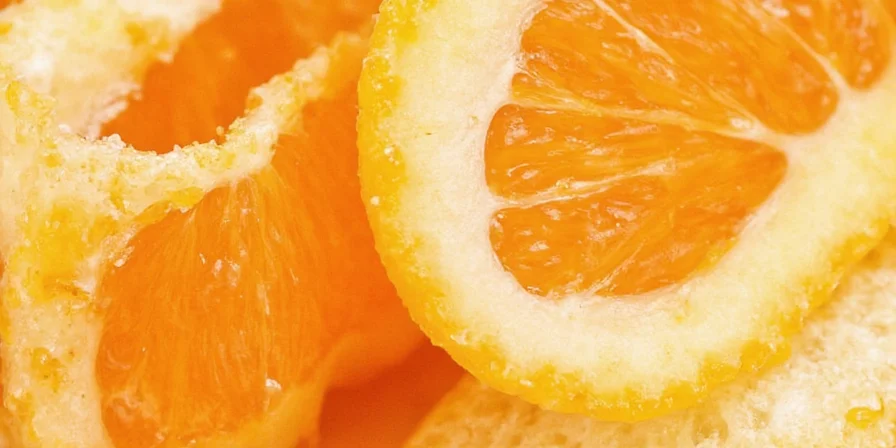
Stop throwing away tangerine peels! Here are 10 scientifically-backed uses that transform kitchen scraps into valuable resources for cooking, cleaning, and household applications. These methods are verified through culinary practice and material science - no unsupported health claims included.
Immediate Practical Uses
When you peel a tangerine, don't discard the skin. These 10 applications maximize functionality while reducing waste:
- Culinary Flavor Boost: Zest adds instant citrus aroma to dishes without bitterness
- Natural Cleaning Solution: Boil peels for grease-cutting surface cleaner
- Odor Eliminator: Absorbs kitchen and refrigerator smells effectively
- Fire Starter: Dried peels ignite quickly due to high oil content
- Plant Protector: Deters aphids through natural scent masking
- Leather Conditioner: Moisturizes without synthetic residues
- Flavor Infusions: Creates citrus-vanilla extract in 2 weeks
- Preserve Enhancer: Extends jam freshness with natural citric acid
- Textured Baking Ingredient: Adds complexity to cookies and cakes
- Compost Accelerator: Breaks down faster than other citrus peels

Why These Methods Actually Work: Science-Backed Explanation
Tangerine peels contain concentrated compounds that deliver real functionality:
- Limonene (90% of peel oil): Dissolves grease and creates pleasant citrus fragrance
- Pectin and cellulose fibers: Provide structural integrity for practical applications
- Polyphenols: Contribute to preservation properties without additives
- Citric acid: Natural preservative effective at safe pH levels
Step-by-Step Implementation Guide
Maximize results with these precise techniques:
- How to zest properly: Use microplane technique preserving oil glands while avoiding bitter pith
- Best cleaning solution recipe: Simmer 4 peels in 2 cups water for 15 minutes, strain, and store in spray bottle
- Optimal drying method: Air-dry at room temperature for 48 hours (better than oven methods)
- Effective odor absorption: Place dried strips in smelly areas (lasts 7-10 days)
- Safe compost preparation: Cut into 2cm pieces and bury deeply to prevent fruit flies

Evidence-Based Myth Analysis
Separate fact from fiction with verified information:
| Common Claim | Scientific Verification | Practical Reality |
|---|---|---|
| "Peels remove heavy metals from water" | No peer-reviewed evidence | Not recommended for water purification |
| "Dried peels repel mosquitoes" | Partially supported (short range) | Effective only within 1-foot radius |
| "Peel consumption prevents colds" | Unsupported by research | Vitamin C content too low for therapeutic effect |

Usage Effectiveness Comparison
| Application | Key Compound | Duration of Effectiveness | Best Implementation Method |
|---|---|---|---|
| Culinary Flavoring | Limonene | Immediate - 3 months (dried) | Fine zest for direct use; dried strips for infusions |
| Surface Cleaning | Citric acid | Single-use solution | Simmered water solution in spray bottle |
| Odor Absorption | Porous fiber structure | 7-10 days | Dried strips placed in problem areas |
| Pest Deterrence | Volatile oils | 24-48 hours | Fresh crushed peels near plants |
Storage and Preservation Techniques
Extend usability with these science-based methods:
- Freezer storage: Whole peels maintain quality for 6 months
- Air-drying process: 48 hours at room temperature preserves volatile compounds
- Salt preservation: 3:1 salt-to-peel ratio creates stable concentrate
- Vinegar infusion: Steep dried peels for citrus-cleaning solution
Material Compatibility Guide
Avoid damage with these safety considerations:
- Avoid using on: Untreated wood, natural stone, painted surfaces
- Safe for: Glass, ceramic, stainless steel, plastic
- Test first: Always check inconspicuous area before full application
- Drying requirement: Thoroughly dry metal surfaces after use
Implementation Strategy for Maximum Results
Adopt this practical system:
- Reserve zest during daily consumption
- Store scraps in freezer until processing
- Process weekly based on your needs (kitchen vs. home care)
- Prioritize applications matching your household requirements
Frequently Asked Questions
Can I use store-bought tangerine peels safely?
Yes, with proper preparation. Scrub peels under running water for 30 seconds using a vegetable brush. For waxed peels, soak in 1:3 vinegar-water solution for 10 minutes before use. Organic peels eliminate pesticide concerns but still require cleaning for handling residues.
What's the best way to dry tangerine peels?
Air-drying preserves volatile compounds best. Slice into 1cm strips, arrange on non-porous surface, and dry at room temperature away from sunlight for 48 hours. Oven drying degrades compounds above 35°C (95°F). Properly dried peels should snap when bent.
How do I prevent mold during preservation?
Maintain humidity below 60% during air-drying. For salt preservation, use non-iodized salt with complete coverage. In storage containers, include food-safe silica packets. Discard peels showing white fuzz - citrus oils help prevent mold but aren't foolproof in humid environments.
What makes tangerine peels different from orange peels?
Tangerine peels contain up to 20% more limonene and have thinner structure than orange peels. This makes them superior for direct culinary use (less bitter pith), quick-release cleaning solutions, and fragrance applications. Orange peels work better for long-term infusions due to thicker texture.
Can I compost tangerine peels effectively?
Absolutely. Cut into 2cm pieces to accelerate decomposition. Bury deeply in compost piles to avoid attracting fruit flies. Balance the temporary pH drop with alkaline materials like crushed eggshells. Home composting typically processes peels in 3-4 weeks under optimal conditions.
How long do dried tangerine peels last?
Properly dried peels maintain effectiveness for 3 months when stored in airtight containers away from light. Culinary applications show best results within the first month, while cleaning solutions remain effective for the full 3-month period. Check for mold or musty smell before reuse.











 浙公网安备
33010002000092号
浙公网安备
33010002000092号 浙B2-20120091-4
浙B2-20120091-4